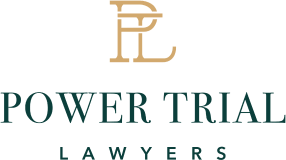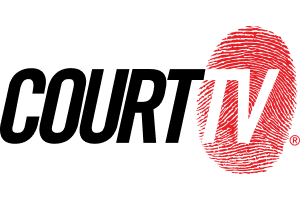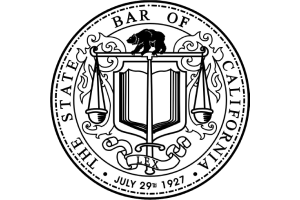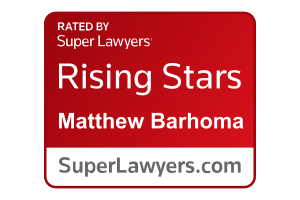- Free Consultation: (888) 808-2179 Tap Here to Call Us
Work Injuries
At Power Trial Lawyers, we understand that a workplace injury can severely impact your life, your health, and your financial stability. Our team is committed to helping hardworking Americans like yourself obtain the justice and compensation you deserve when mistreated by the system. We handle a wide range of work injury cases and are equipped with the knowledge and determination it takes to fight for your rights. Legal jargon and bureaucracy could be overwhelming when you’re on your own, but with us by your side, you won’t have to face these difficulties. If you’ve been injured at work, do not hesitate to reach out to us at (888) 808-2179 for a free consultation. Let us guide you through the complex process and strive to secure the most favorable outcome. Trust in the law, but more importantly, trust in Power Trial Lawyers.
Types of Work Injuries
Work injuries can take on many forms, each varying in severity but with potential long-term effects.
- Head injuries: These are among the most serious workplace injuries and can occur due to falling objects or slip and fall accidents. Symptoms may be as severe as concussions or traumatic brain injuries needing long-term care.
- Back Injuries: Often sustained due to heavy lifting or prolonged periods of sitting, these can lead to chronic discomfort or even disability.
- Broken Bones: Falls, being struck by objects, or accidents on the job often result in fractures, affecting mobility and job performance.
- Repetitive Stress Injuries: These are generally developed over time due to repetitive motion or prolonged strain, often seen in carpal tunnel syndrome.
- Burn Injuries: Workers are at risk of burn injuries from fire, hot surfaces, steam, or chemical exposure.
- Sprains and Strains: Overexertion or slips, trips, and falls can result in torn ligaments and strained muscles.
- Soft Tissue Injuries: These include injuries such as whiplash or hernias, which can be caused by an abrupt impact or overexertion.
- Electrical Injuries: Electric shocks can result in severe burns, nerve damage, or heart failure, which are common in construction jobs.
- Crushing injuries: Occur when part of the body is squeezed between two heavy objects, leading to severe pain, broken bones, or internal bleeding.
- Lacerations: Sharp objects and machinery can cause deep cuts, affecting nerves and muscles, leading to loss of function or disfigurement.
- Work-Related Illnesses: These can result from exposure to harmful environments or substances like asbestos. Long-term exposure can cause serious diseases, including cancer.
Each of these injuries requires immediate medical attention, proper rehabilitation, and adequate compensation to support recovery and maintain a person’s well-being.
Workers’ Compensation Claims
In the face of a work-related accident or illness, navigating the complexities of workers’ compensation can be stressful and challenging. The crux of the matter is that workers’ compensation is the sole legal remedy that an employee can seek against their employer or coworker under U.S. law. This is regardless of who bears responsibility for the occurrence of the accident. A significant point to remember is that for workers’ compensation to apply, the incident must occur while executing job-related tasks.
What does this mean for you? It means that the law acknowledges the risks inherent in workplaces, and it’s ready to provide a safety net for you if you become a victim of a workplace accident or illness. This safety net comes in three primary forms, which all collectively constitute what is called ‘benefits’ under workers’ compensation law.
Firstly, there are medical benefits. This is a financially protective measure that covers any incurred medical expenses relating to the treatment of the work-related injury or illness. Secondly, considering that the victim might be unable to work for a while, wage benefits act as an income supplement to offset the loss of regular wages during this period. Lastly, there’s vocational rehabilitation, a provision designed to help those who, due to their injuries, cannot continue with their previous job duties. This benefit might encompass necessary job retraining, placement services, and even counseling. By understanding these core principles, you’re better poised to handle and manage any work injury situation effectively.
Third-Party Work Injury Lawsuits
Accidents can occur in the blink of an eye, and when they happen at work, they can be particularly distressing and disheartening. When an individual suffers a work injury, it may be possible for him or her to seek legal action not only against their employer but also against a third-party who might be responsible for the accident. This course of action may bring to light greater possibilities for recovering damages that are unavailable through typical workers’ compensation claims.
To elaborate, this third-party claim doesn’t necessarily mean a coworker who might have inadvertently played a role in the accident. It could also involve a manufacturer of faulty equipment, an outside contractor, or a property owner whose negligent conditions contributed to the injury. Each case is nuanced and unique, often necessitating a comprehensive legal understanding and strategic approach.
But, it’s essential to remember that pursuing a third-party claim doesn’t have to preclude an individual from also seeking a workers’ compensation claim. This dual approach could potentially result in a more comprehensive compensation package that acknowledges the full gravity and consequences of a workplace accident. Our law firm is committed to navigating these complex situations to ensure that victims of workplace injuries are treated fairly and compensated justly. Our experience encompasses a wide variety of work-related injury cases, and our team has the legal acumen necessary to handle challenging scenarios and deliver favorable outcomes.
Whom to Sue in a Third-Party Work Injury Claim
- Vehicle Operator: If your work injury is due to a car crash while conducting your employment duties, the responsible vehicle operator may be accountable. Their negligent action, such as speeding, distractive driving, or failure to obey traffic laws, could lead to legal liability.
- Property Owner: Should your work injury originate from a hazardous condition in the workplace premises, the property owner can be liable. Common issues could pertain to wet floors resulting in slips and falls, inadequate lighting, faulty staircases or insufficient safety measures in place.
- Equipment Manufacturer or Distributor: If you are injured at work due to defective or malfunctioning equipment, the fault might rest on the shoulders of the equipment manufacturer or distributor. They are responsible for ensuring the safety and optimal functioning of their products for use in diverse workplaces.
- Maintenance or Service Company: When you possess a work injury elicited by the improper maintenance or repair of equipment or infrastructure by a service company, they might be accountable. These entities are obligated to provide proficient service to ensure the safety of employees using the property or equipment.
- Architects or Engineers: If a poorly designed structure or work area causes your injury, you can possibly sue the architects or engineers involved. They are responsible for creating safe and functional designs that adhere to standard building codes and regulations. In a scenario where their negligent design directly results in a work injury, they could be held liable.
Proving the Fault of a Third Party for Work Injuries
At our law firm, we believe in a comprehensive understanding of negligence claims in relation to work injuries. There are primarily four constituent elements of a negligence claim. Firstly, the element of ‘duty of care’ signifies that every employee has a right to expect a safe and secure working environment. Employers are legally obliged to ensure workplace safety and they are expected to do what a reasonable person would do in a similar situation to foster such an environment.
The second element of a negligence claim is ‘breach of duty.’ This suggests that if an employer fails to uphold their duty of care, they are in breach. For example, if critical safety measures are not implemented or safety equipment is not provided, employers may be held accountable for a breach.
‘Causation’, the third component, directly connects the breach of duty to the injury sustained. Quite simply, the injury of an employee must be a direct result of the negligence or breach of duty by the employer. Lastly, ‘damages’ refer to the legibility of the employee to claim compensation due to the injury resulting from the breach of duty.
On certain occasions, some work injury claims revolve around a ‘strict liability’ theory. This suggests that the employer may be held responsible for an employee’s injury disindependent of traditional negligence elements. It typically applies to inherently dangerous situations, where no amount of precaution can entirely eliminate risk. Handling these complex claims requires a law firm with a thorough understanding of the law and a commitment to fight for the rights of injured employees. Dedication, determination, and knowledge are what sets our law firm apart.
Comparative Negligence in Third-Party Work Injury Lawsuits
Comparative negligence is a critical concept in the realm of injury law that can significantly influence the compensation a victim might be entitled to receive. When an incident occurs, the fault is not always entirely on one party but can instead involve a percentage allocation of blame. Understanding comparative negligence can make a difference in the final outcome of the case.
In the state of California, the law surrounding comparative negligence operates under a system known as “pure comparative negligence”. This scheme allows a victim to recover damages even if they are partly to blame for the accident. However, their compensation will be reduced according to their fault percentage. If a plaintiff is found to be 30 percent responsible for the incident that caused the injury, then their total recovery amount will be reduced by that same percentage.
In other words, even if a victim is 99 percent at fault in California, they can still technically recover damages. However, the recovery would be minute, as it would be decreased by the plaintiff’s high percentage of liability. It’s worth noting that not all states follow this particular rule. Some use a “modified” comparative negligence rule that bars recovery if the plaintiff is found to be either 50 or 51 percent at fault, depending on the state’s specific laws. Understanding the particular rule applied in your case is crucial to anticipate potential outcomes effectively. Our proficient team of attorneys are well-versed in this area of the law to handle such complex issues effectively and efficiently, thereby maximizing your legal rights and potential recoveries.
Damages in Third-Party Work Injury Lawsuits
Work injuries can take various forms and may tribute to severe physical and emotional distress. Having to deal with the financial implications from these damages can significantly increase the difficulties faced during recovery. Hence, it is critical for injured workers to understand the types of damages that may be collected in third-party work injury lawsuits. These damages typically fall into two broad categories: economic and non-economic damages.
- Economic Damages: These are the tangible costs resulting from an injury. They are straightforward to quantify as they are typically documented expenses. Workers can seek financial compensation for:
- Medical Bills: This includes the costs of emergency room visits, hospital stays, surgeries, medication, physical therapy, and any other medical expenses that result from the injury.
- Lost Income: If an injury prevents a worker from performing their regular duties, they may be entitled to compensation for lost wages during the recovery period.
- Future Treatment Costs: If a worker’s injury requires ongoing medical care, those costs can be considered when determining compensation.
- Non-economic Damages: These are intangible losses that do not have a specific monetary value but significantly affect one’s quality of life. They include:
- Lost Earning Capacity: If a worker’s injury impacts their ability to earn future income, they may be entitled to compensation to offset this loss.
- Pain and Suffering: This covers the physical pain and emotional distress caused by a work injury. It includes anxiety, depression, loss of enjoyment of life, and other mental and emotional distress.
Our team is here to help you navigate through these complex issues and ensure you receive the compensation you deserve.
Statute of Limitations in Third-Party Work Injury Lawsuits
Understanding the importance of the statute of limitations when it comes to workplace injuries is critical to any potential legal action you may be considering in the aftermath of an accident. Simply put, the statute of limitations is a predetermined period of time during which a workplace accident victim can initiate a lawsuit. In the state of California, the statute of limitations for a third-party work injury claim is typically two years from the date of the injury. However, if the injury was not discovered right away, then the timeframe may be extended to one year from the date the injury was discovered.
Why does this matter to an accident victim? The importance of the statute of limitations cannot be overstated. If you fail to file a lawsuit within the specified timeframe, you may lose your right to seek legal recourse for your injuries and any associated damages. Adhering to this timeline is thus integral to safeguarding your potential to obtain compensation. By understanding your rights, timeframes, and legal avenues, you equip yourself with the knowledge necessary to navigate the complexities of workplace injury law effectively.
Our law firm has an exceptional record of helping individuals understand these often complex legal terms and their implications. With our thorough understanding of work injury laws, we can offer guidance and representation to ensure that your case is filed within the mandated timeline. You’re not alone in this. We are committed to helping you understand your rights and navigate the legal landscape. This area of law might seem daunting, but with the right professional support, it doesn’t have to be.
Settlements in Third-Party Work Injury Lawsuits
Every day, countless individuals suffer injuries while on the job, which can be life-altering, causing significant discomfort, anxiety, and financial strain. Hiring a seasoned law firm like ours with a record of success handling work injuries can be pivotal in getting your life back on track. We assertively advocate for our clients who have been afflicted, relentlessly pursuing the compensation you rightfully deserve from employers or insurance companies, whether it’s reimbursement for medical bills, lost wages, or other related expenses.
However, one of the choices injured workers face post-accident is whether to settle their claims or proceed to trial. Each path carries potential advantages and drawbacks. Case settlements often result in quicker payouts, alleviating pressing financial needs and avoiding the stress of a court trial. Conversely, going to court can sometimes yield higher compensation, particularly when there’s strong evidence of grievous negligence.
It’s crucial to understand that accepting a settlement typically comes with a release of claims — an agreement to waive any future lawsuits related to the accident. While this can expedite matters, it may limit your legal rights moving forward. Therefore, we stand by our clients, guiding them through each step, to aid in making these crucial decisions with a clear understanding of potential consequences. Our practice in handling work injury cases allows us to advise you appropriately based on the intricacies of your case and the nature of the injury. Every case is unique, and so should be the strategy to tackle it.
Let Us Help You Pursue Compensation
Being a victim of a workplace injury should not leave you powerless. The attorneys at Power Trial Lawyers are dedicated to helping you secure rightful compensation and will guide you through the intricacies of workers’ compensation and third-party injury claims. We treat each case uniquely, acknowledging the individual needs and circumstances that shape your claim. We strive to obtain success for you, whether that involves a settlement or going to trial. Our robust legal team will tirelessly fight to hold at-fault parties accountable, aiming to restore your quality of life and alleviate the financial burden caused by work injuries. Your journey to justice and recovery should not be tread alone. Contact us today at (888) 808-2179 to take the initial step toward securing your future and wellbeing. We offer a free consultation to understand your case and determine the best course of action for you. Trust us to protect your rights and interests. Put the power of law on your side with Power Trial Lawyers.
























